This article will explain the importance of knowing what your flash sync terminal voltage is, and show you how to measure the voltage to make sure your flash is safe to use with your digital camera.
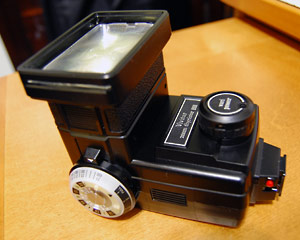
Vivitar 285 'Zoom Thyristor' Flash Head |
A few months ago, I was looking into purchasing a flash to use with a slave for my Canon PowerShot S2 IS, and I was very fortunate in finding a Vivitar 285 flash head for $20 at a local auction. And, best of all, it was unused (but an old model...). It worked great with my Canon, but after my Canon died, I bought a Nikon D40 (which I used to take the pictures on this page), which had a flash hot shoe on the camera's body. Luckily for me, I had read earlier that some Vivitar flash units used very high flash sync terminal voltage (sometimes over 200V!), and the only way to find out if my 285 was safe was to measure the voltage on the flash unit.
Unfortunately, though, finding a guide for (a) how to measure the voltage and (b) what voltages are safe for my camera was very tough. I found this site, which explained the process of measuring the voltage, but didn't have many pictures, and this site [botzilla.com], which lists voltages of many Vivitar (and other) flash heads, but, as I didn't see any really nice guide to the process, I decided to make my own guide here.
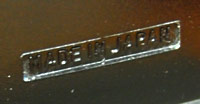
'Made in Japan' |
The basic problem is this: many modern digital cameras' circuitry will be harmed (sometimes fried) if you use a flash with a sync terminal voltage greater than 6 volts. And many older flash units weren't manufactured to a strict voltage specification—especially if they were manufactured at different facilities. Supposedly, Vivitar 285/285HV flash units that read 'Made in Japan' on the bottom (see illustration) were the dangerous ones. But some are safe to use (mine included).
If you measure the across the center pin on the bottom of the flash and the rail contacts in the hot shoe connection on the flash while the flash is fully charged (with its green ready light on), you will be able to determine if your flash head is able to be used with your camera.
How to Measure the Sync Terminal Voltage
What you will need:
|
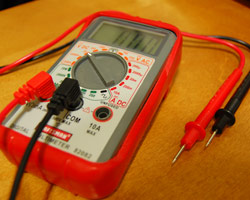
Digital Multimeter (can be had for ~$20!) |
-
Turn on your multimeter, and set it to DC voltage, at the highest range (I set mine to 1000V to start).

-
Turn on your flash head, and set it to the highest power setting (on the 285, set the dial on the front (on the 'vari power' module) to 'M').
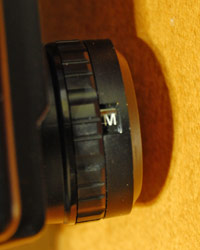
- When the flash is fully charged (and the green ready light is on), flash it using the red test button, then let it recharge again.
-
After it's recharged, put the black test lead from the multimeter on the electrical connection pin inside the hot shoe rail on either side of the bottom of the flash, and the red test lead from the multimeter on the bottom hot shoe electrical connection pin (see illustration).
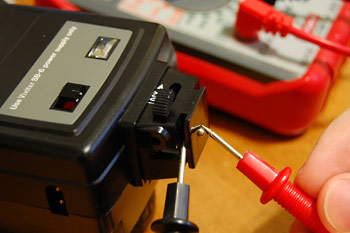
-
Your multimeter should show a reading; if the reading is very low, turn the multimeter's range down to something like 100 or 200 volts. If the range is still too high, turn it down again, until you can read what the voltage difference is between the two leads on the flash. After the flash is fully charged on my unit, the voltmeter reads '6.14' volts. (Note: While the flash is charging, your meter will read anywhere from 0.0 to 0.2 volts - this is normal).
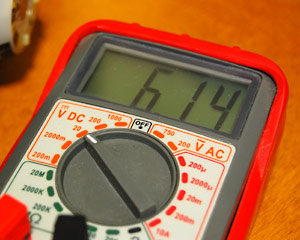
- To make sure the flash is consistent in its voltage, it's a good idea to press the test button a few more times and see if the voltage stays the same (+/- a few hundreths of a volt).
- If the voltage is around 6V or lower, it should be safe to use on most digital SLR or digital point and shoot cameras with a hot shoe for the flash. If there is any doubt, contact the manufacturer and ask what the maximum flash sync terminal voltage for your particular camera model is (some Canon cameras, including the PowerShot G series, might not even accept more than 4V!).